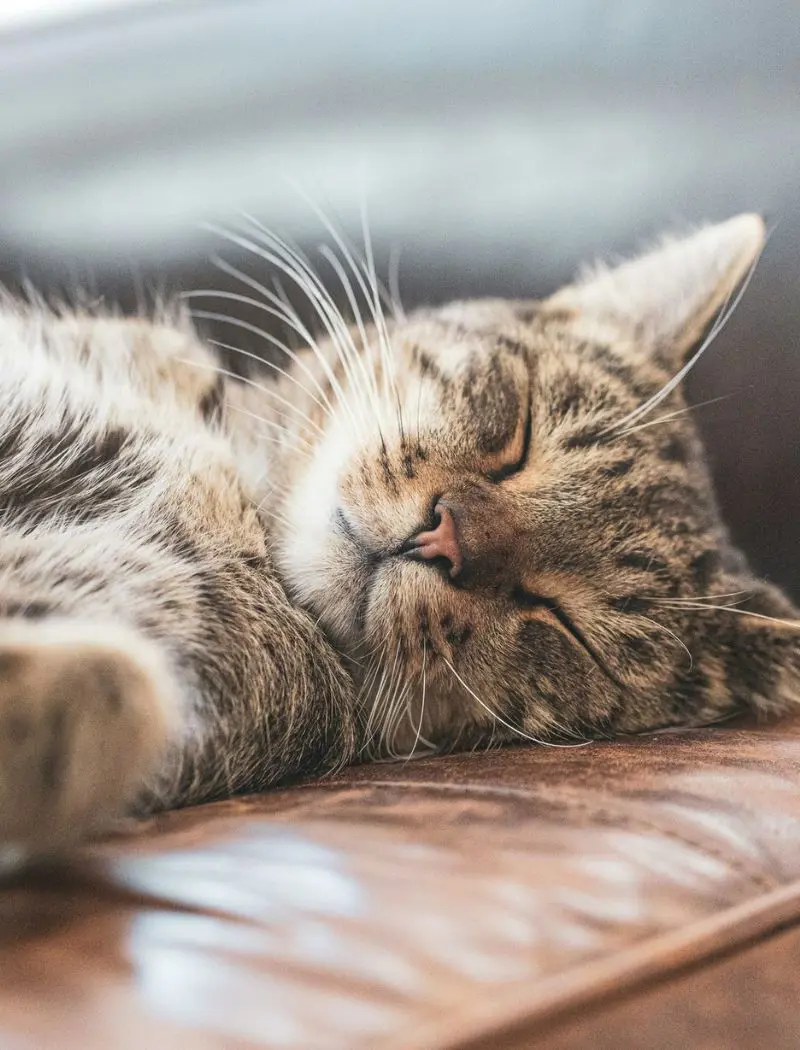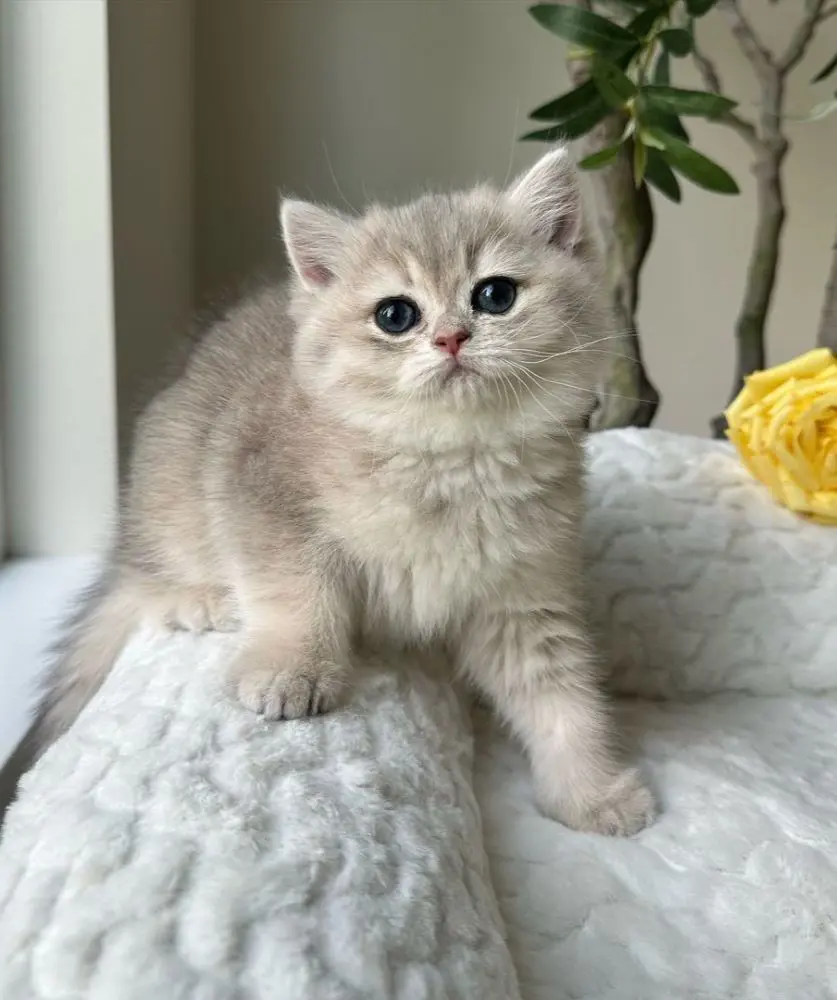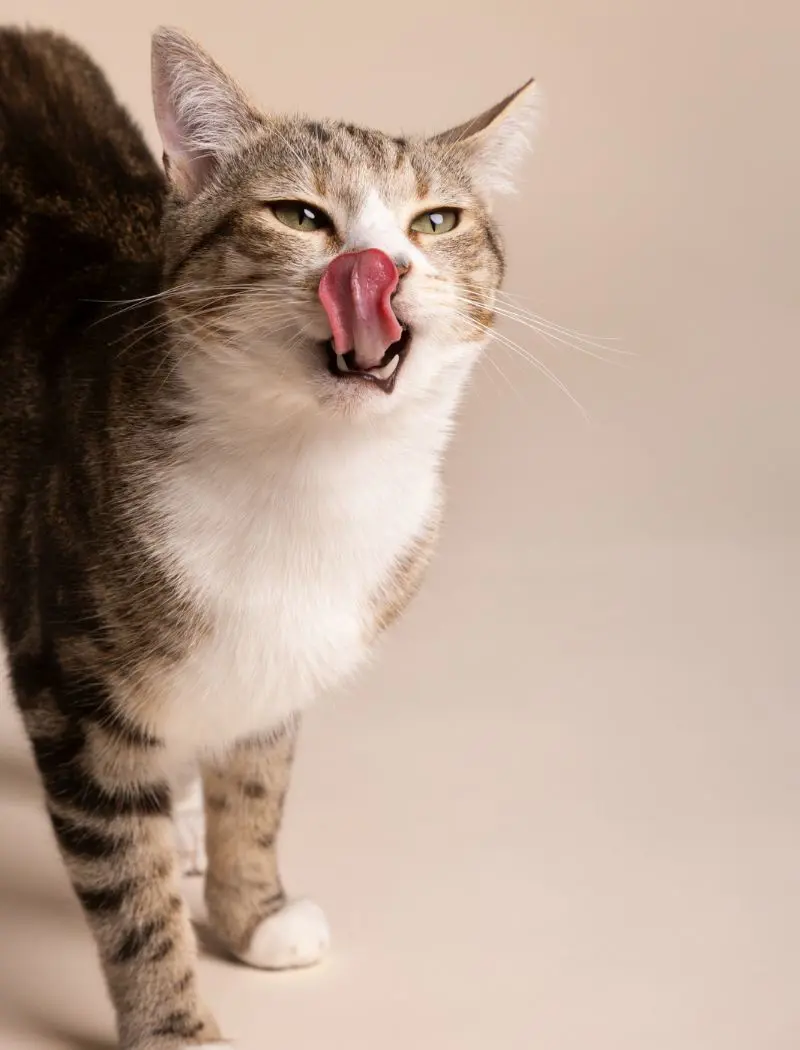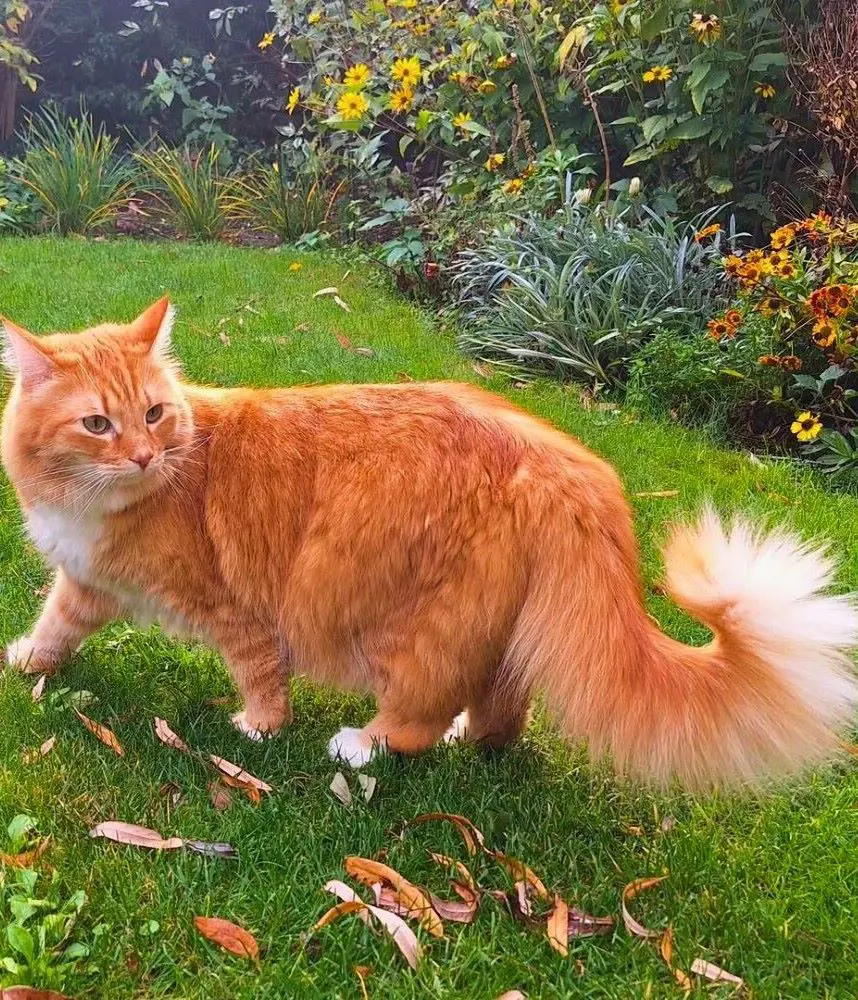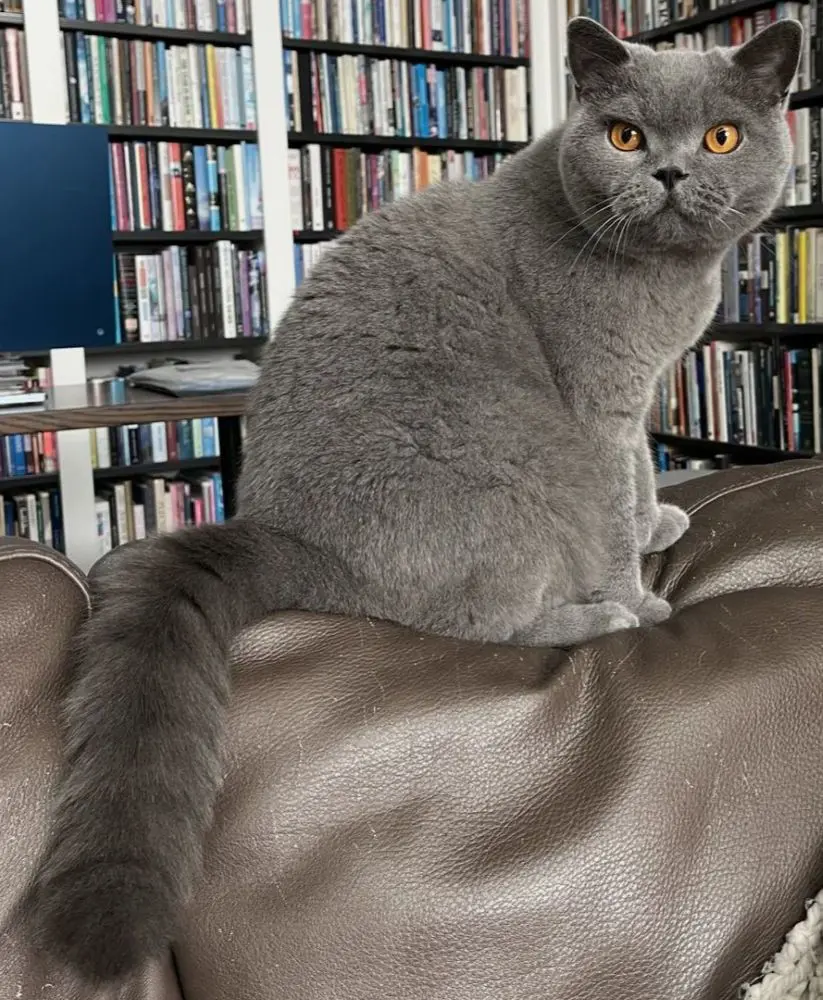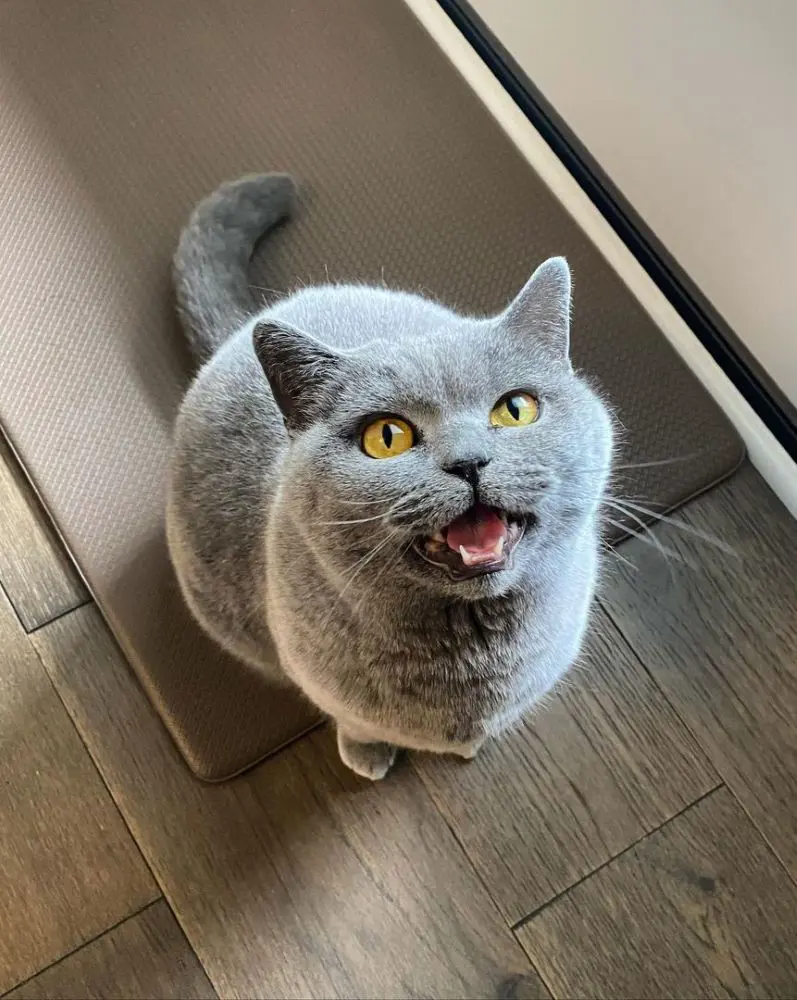How Do Cats Show Affection?
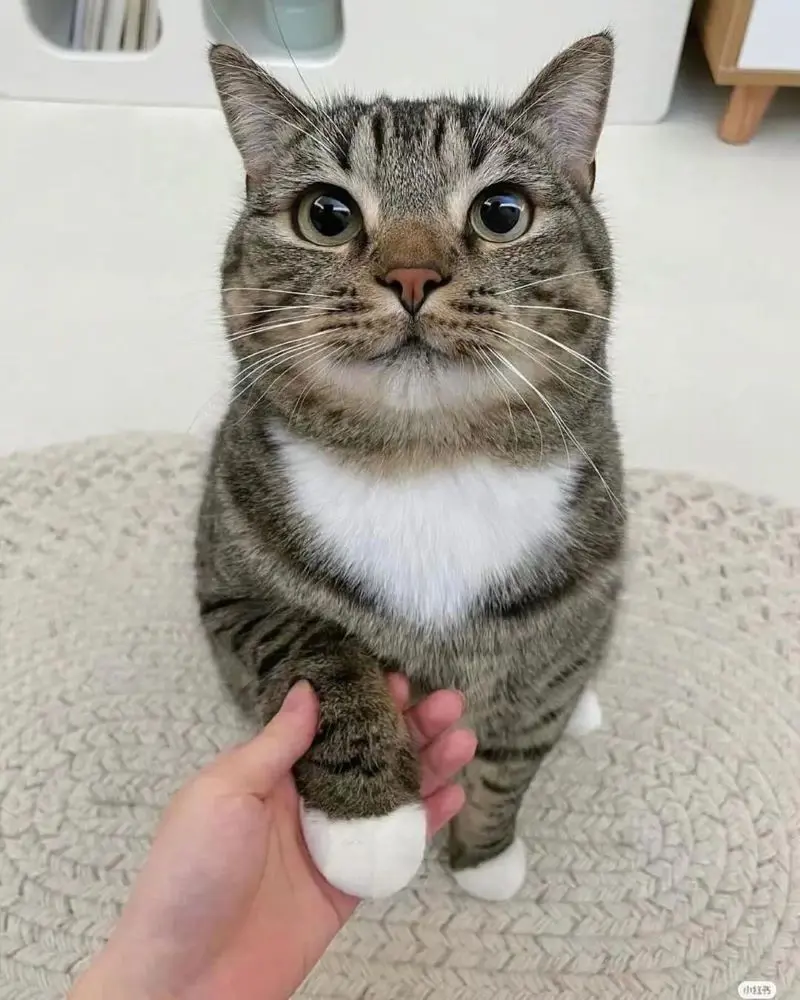
Cats don't always show it, but they do love their humans as much as any other housepet. With a joint history of over 10,000 years with humans, cats have evolved from rodent hunters to beloved companions.
While not as expressive as dogs, cats still love to occasionally shower love on their humans and other pets of the family. If you are new to cat parenting, signs of affection can be hard to distinguish from their normal behavior.
These are 10 common ways cats prefer to express their affection and gratitude for giving them a safe life with plenty of food and comfortable sleeping spots.
1. Purring
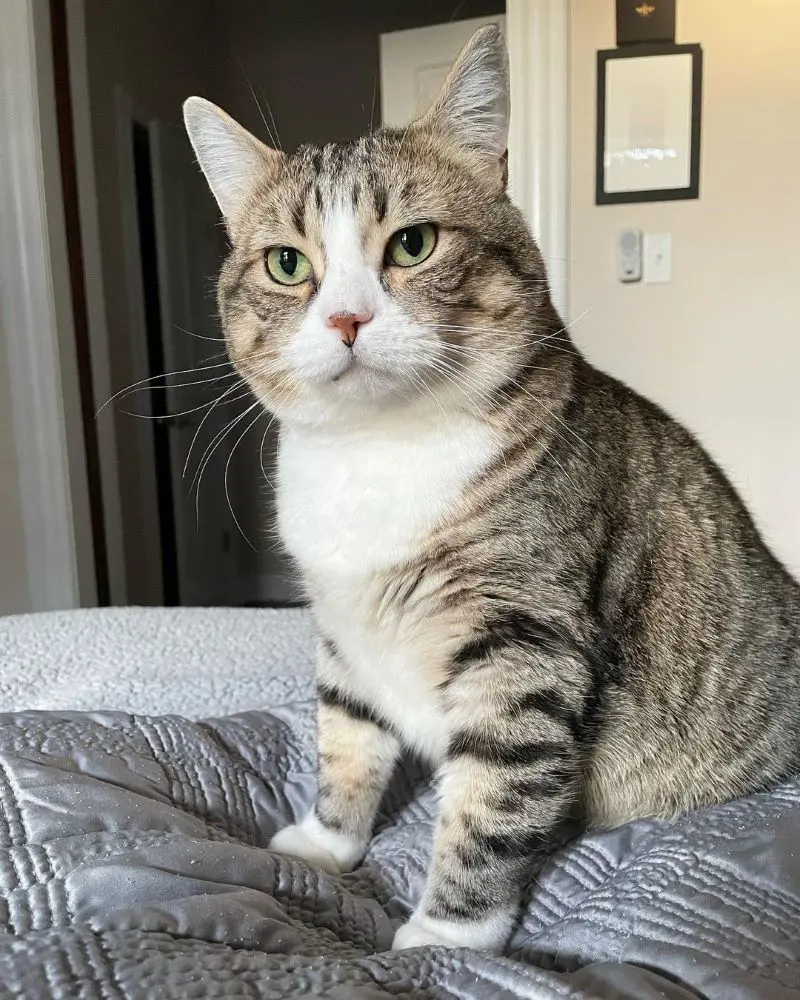
In affectionate cats, purring is an effective method to show their love for humans or other cats. The purring sound is emitted when a cat's vocal folds expand and contract rapidly; the vibration is caused by the cat's regular inhaling and exhaling air.
Usually, cats purr when they are happy and content, from food or an emotional cuddle with their humans. Normally, when a person pets their cat, the feline might purr in return to show its satisfaction from the experience.
At the same time, purring is also a classic sign of a strong bond between you and your cat.
2. Head Bunting
Cats are territorial by nature; they mark their territory by spreading their scent and, sometimes, marking their urine. Your cat will probably not pee on you, but they will try to spread their bodily scent through head bunting.
Also known as a headbutt, head bunting isn't all about marking territories for cats; they also use this to show their affection or to demand attention from their owners. Head bunting is an instinctive behavior that is still prevalent in wild cats.
This nature of affection can emerge at any moment, without any prior signs from the cat. It is a demand from the cat to stop everything you're doing and love him immediately.
3. Kneading
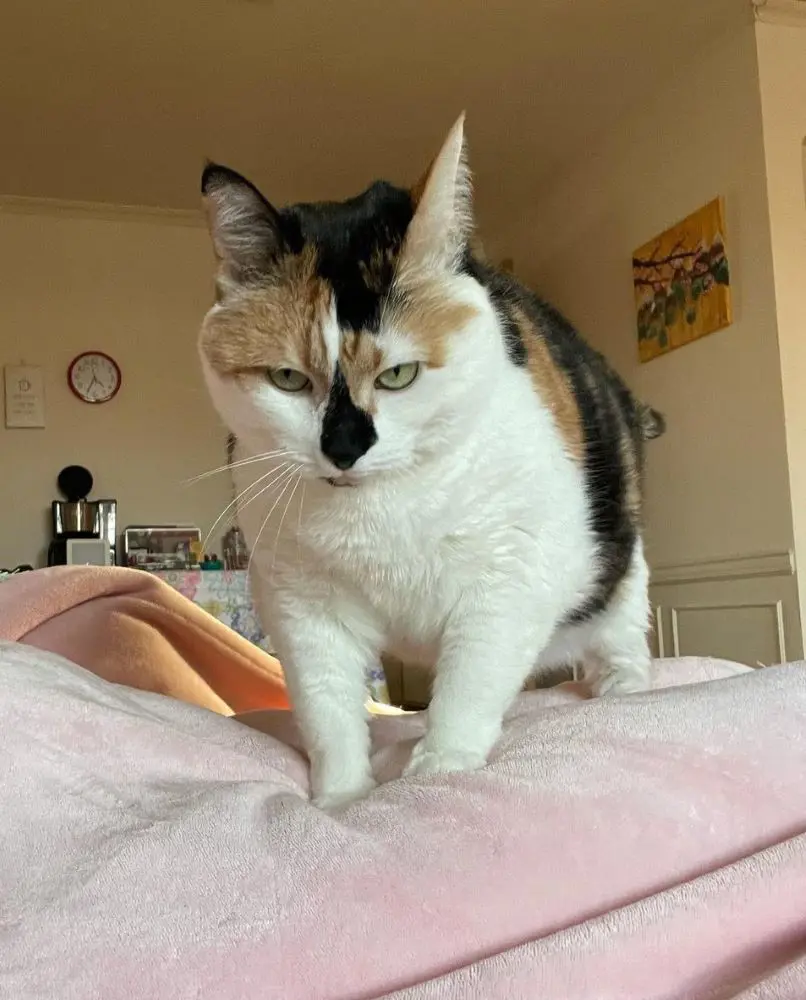
Also known as making biscuits, kneading is a behavior unique to domestic cats. The act often involves the front limbs making "push out" and "pull in" movements, resembling the hand movement made while kneading dough.
In cats, kneading starts when they are still young. During their childhood, kittens use this motion on their mom's belly to raise milk production. Due to the relaxation this activity brings, many cats continue this behavior as adults.
Although cats make these kneading movements on different objects like blankets, furniture, and more, kneading on a human body is often seen as a sign of trust. Further, it could also imply that the cat has accepted the human as a guardian, who takes care of their every need.
During this process, the cat releases dopamine to make it feel positive and relaxed, motivating them to continue kneading for much longer. While the act is usually harmless to humans, it can ruin and destroy precious household items like furniture, bed sheets, and so on. You can remedy the situation by consulting a vet and using positive reinforcement techniques to stop them from destroying your household items.
4. Slow Blinking
Cats can't speak human language but they do communicate through body language; slow blinking is a tool for cats to say "I love you" to you. This behavior is not instinctive, meaning cats do it voluntarily to show their love for humans or other animals.
In most cases, cats are the initiator of these slow blinks and may even expect one in return. Meanwhile, in some scenarios, a cat could even react to a slow blink for their owners.
Often referred to as the butterfly kiss of the feline world, slow blinking can be interpreted as the cat's level of comfort when they are near you. A kitten will rarely make this gesture unless it trusts you completely, to the point of leaving their lives in your hands.
5. Bringing Gifts
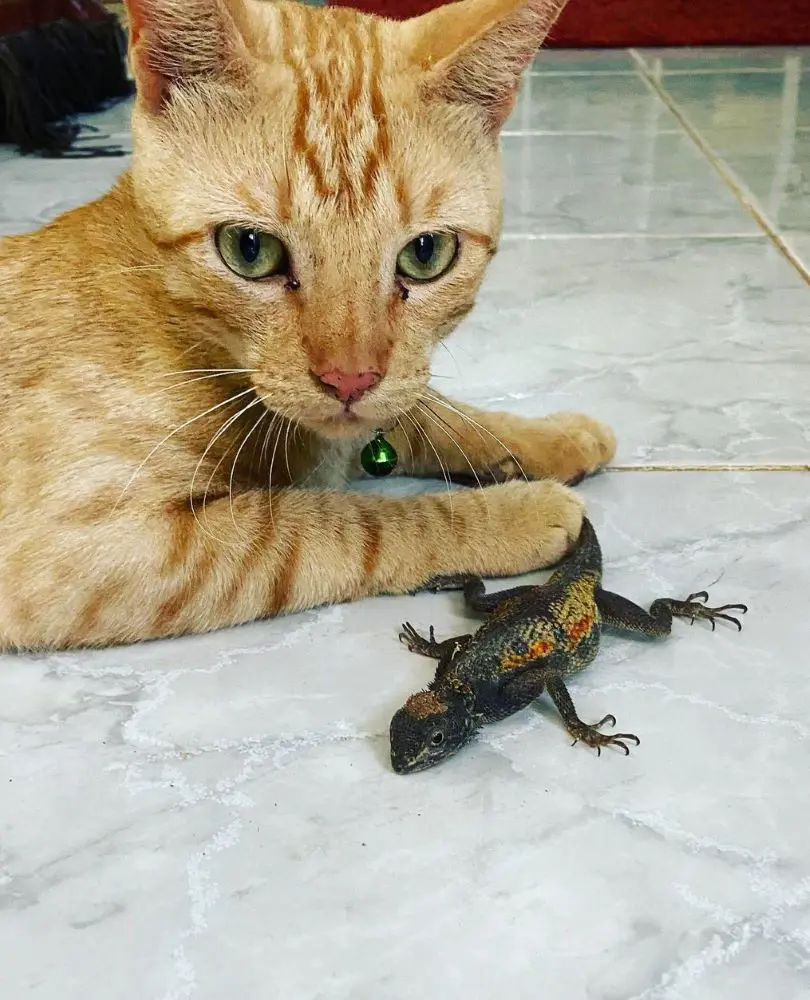
While your cat loves you, it may not always hold you in high regard. In fact, on many occasions, cats will perceive their owners as too weak to hunt and may delegate the responsibility to themselves.
Cat owners should be aware of the occasional dead rats or other small animals brought by their cats. Felines consider these animals to be food, which cats gift their owners as a sign of gratitude.
Also, their gifts are not always dead birds or rats - cats also bring toys and other items. In fact, an orange cat went viral after bringing over 1500 gloves from a construction site to a lady who fed it.
6. Following You Around
When a cat finds a loving home, it can become over-attached to the humans living there. Like humans, cats also have a favorite person, possibly their food provider or the individual who spends the most time with cats.
If a cat follows you around the house, there's nothing to be worried about. People even joke about their cats supervising them by taking an interest in what you're doing.
While you may occasionally enjoy the attention given by your cat, it's not particularly beneficial for cats to grow overdependent on humans. If this behavior is not checked, it can anxiety and stress in the long term by triggering separation anxiety when the human is not around.
7. Exposing Their Belly
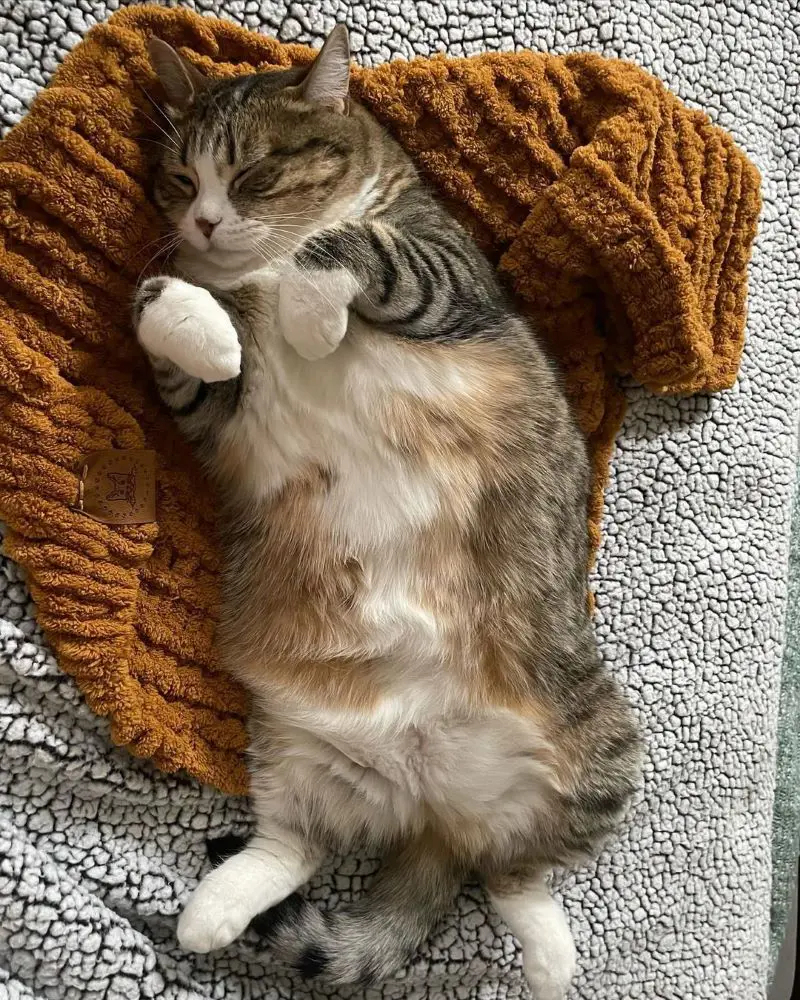
The belly is one of the most vulnerable parts of a cat's body; it is soft and not protected by the spine. Injuries and damage to their stomach can be life-threatening if not treated properly.
Despite being aware of this weak point, cats still frequently roll over, exposing the belly. A cat doesn't do this unless it completely trusts you.
Showing their belly can also be an indicator of a defensive position or a way to cool down. But, when done in front of a human, it is mainly to catch the attention of the person. However, don't mistake the belly exposure as an invitation to touch it. Some cats will even get aggressive or violent when you try to pet the belly.
8. Grooming You
As extremely hygiene-oriented animals, cats want their home and humans to remain clean and tidy. Sometimes, they will even assist by licking the hair and other part of a person's body.
Although there are many reasons cats groom their humans, affection is often the leading source of motivation. This behavior, called allogrooming, is not uncommon among cats that share a close social bond and is a way of establishing a sense of "family."
Additionally, the grooming will also help the cat spread its scent onto you or remove any other scents that the cat finds undesirable. By licking you, cats may be subtly marking you with their scent, mixing it with yours. This is a way of "claiming" you as part of their territory.
Normally, cats will lick their owners' skin or even hair; their tongues have tiny barbs that help remove loose fur. Meanwhile, some cats add gentle nips to their grooming routine, often as a playful gesture.
9. Rubbing Against Your Body
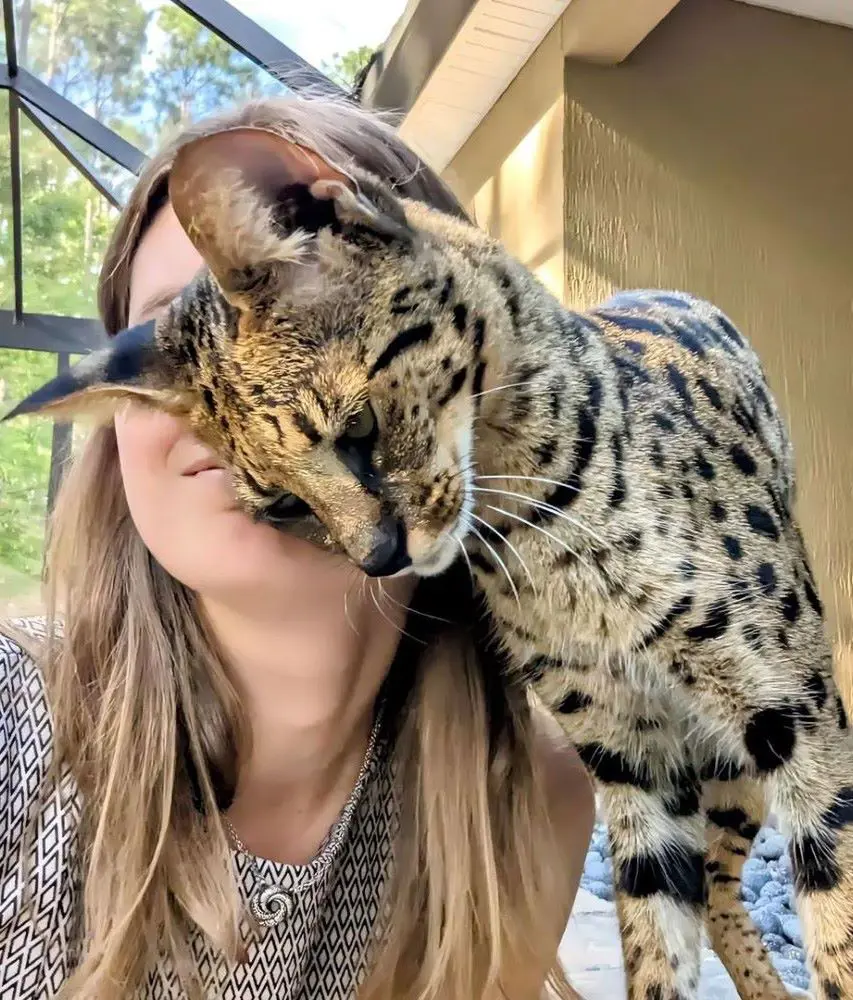
A common hoax surrounding cats is that they don't love getting touched or petted. However, this is only true for strangers as cats love to cuddle with their favorite humans and may even demand petting from their owners.
The action of rubbing its body against yours is related to how they spread their scent to humans, often recognizing their owners from a distance. Much research has shown that cats perceive humans as bigger cats who are members of their clan.
Friendly cats often rub their bodies against each other to show their love and acceptance. The motivation is similar when felines try this technique with humans. While a special bonding moment for you and your cat, make sure that they don't shed too much on your freshly washed clothes.
10. Soft Meows
Unlike the louder or more vocal meows used by a cat to demand food or attention, soft meows in cats are usually gentle vocalizations reserved for times when the cat is feeling calm and content around someone they trust. The meowing is possibly a way for them to talk to you, an indicator that they enjoy your company and feel safe around you.
Cats usually don't use soft meows with strangers or even with other cats. So, it's a special gesture if your cat is offering you soft meows- it’s their unique way of showing affection and tightening their bond with you.
How Do Cats Give Kisses?
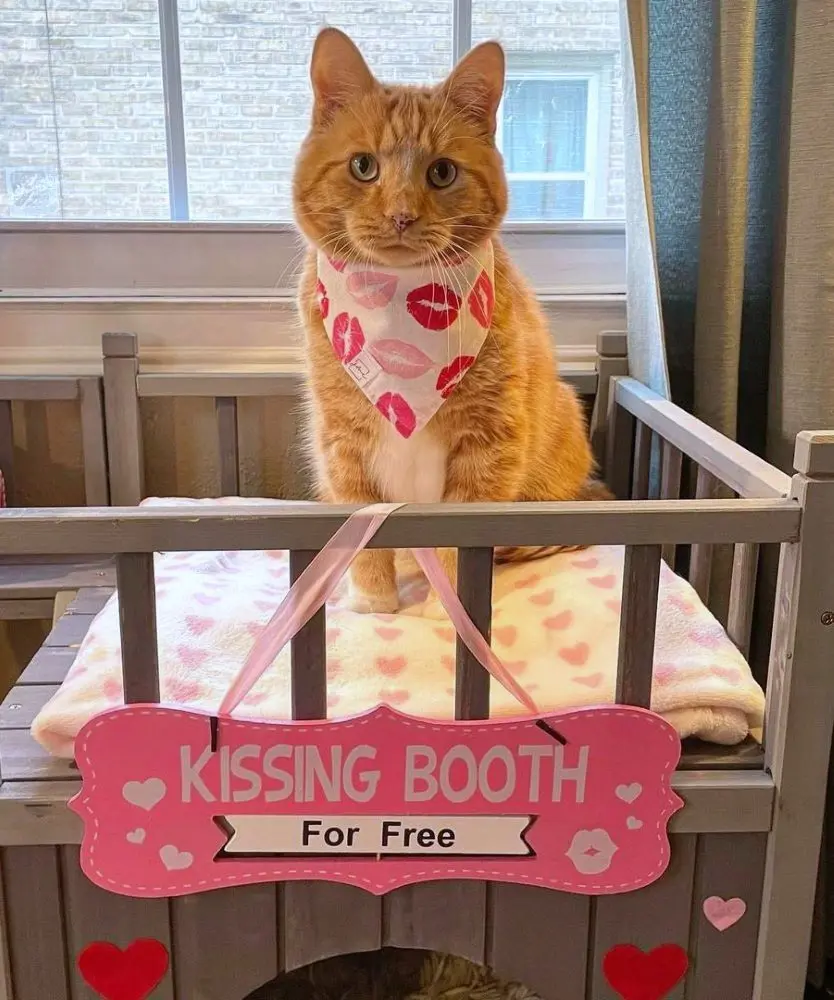
Cat kiss is simply a term used to describe a cat showing affection to humans or other animals. Unlike humans, cats can't literally kiss, but, over the years, they have developed multiple techniques that have a similar effect to a human kiss.
The slow blink, as explained above, is the most common form of giving kisses in cats. This unique blinking is not much different than a normal blink, only it is slower and more relaxed.
Likewise, licking, or grooming, humans is also a vital part of a cat's kiss. This action mimics how they care for their young or close companions, usually signifying strong bonding and understanding between a person and a cat.
How To Tell If A Cat Loves You?
Purring is possibly the most reliable way to determine whether your cats love you or not. Affection from cats can't be earned in a couple of days; it generally requires years of patience and multiple scratches before the cats finally start acknowledging you.
Even within a family, a cat can be biased - showering love to someone, while cold in front of others. They are often attached to their caretakers and food providers. But, how do you know whether the cat is only using you for food or if the cat actually loves you?
You can always determine if a cat really loves you or not by monitoring its attitude around the human without using food to bribe them. If they continue to maintain an affectionate temperament, be assured that your cat indeed loves you.
Top Lists
